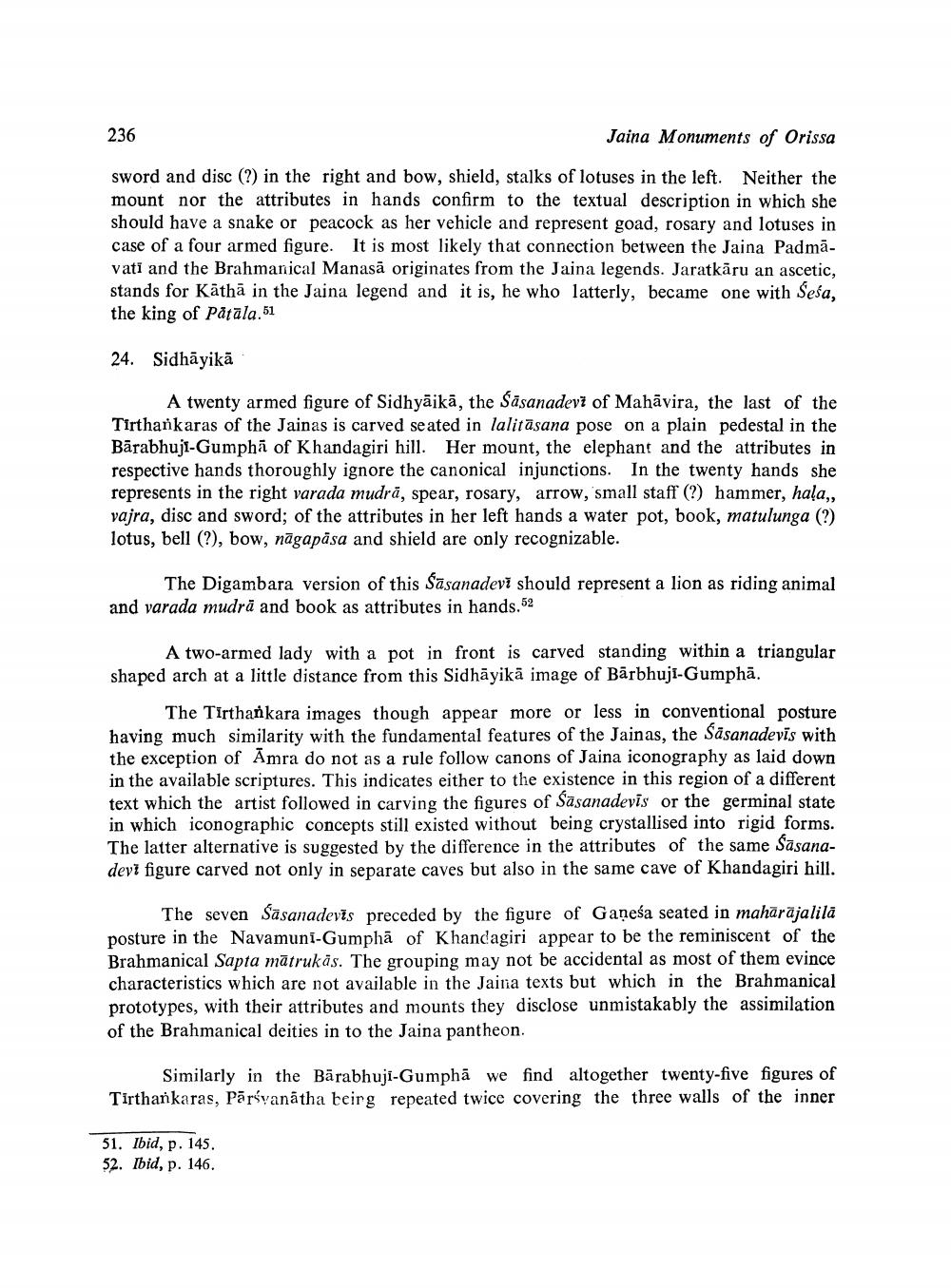________________
236
Jaina Monuments of Orissa
sword and disc (?) in the right and bow, shield, stalks of lotuses in the left. Neither the mount nor the attributes in hands confirm to the textual description in which she should have a snake or peacock as her vehicle and represent goad, rosary and lotuses in case of a four armed figure. It is most likely that connection between the Jaina Padmā. vati and the Brahmanical Manasā originates from the Jaina legends. Jaratkāru an ascetic, stands for Katha in the Jaina legend and it is, he who latterly, became one with Sesa, the king of Påtala.51
24. Sidhāyikā
A twenty armed figure of Sidhyāikā, the Śāsanadevi of Mahāvira, the last of the Tirthankaras of the Jainas is carved seated in lalitāsana pose on a plain pedestal in the Bārabhuji-Gumphā of Khandagiri hill. Her mount, the elephant and the attributes in respective hands thoroughly ignore the canonical injunctions. In the twenty hands she represents in the right varada mudrā, spear, rosary, arrow, small staff (?) hammer, hala,, vajra, disc and sword; of the attributes in her left hands a water pot, book, matulunga (?) lotus, bell (?), bow, nāgapāsa and shield are only recognizable.
The Digambara version of this Šāsanadevī should represent a lion as riding animal and varada mudrā and book as attributes in hands.52
A two-armed lady with a pot in front is carved standing within a triangular shaped arch at a little distance from this Sidhāyikā image of Bārbhuji-Gumpha.
The Tirthankara images though appear more or less in conventional posture having much similarity with the fundamental features of the Jainas, the Säsanadevis with the exception of Amra do not as a rule follow canons of Jaina iconography as laid down in the available scriptures. This indicates either to the existence in this region of a different text which the artist followed in carving the figures of Sāsanadevīs or the germinal state in which iconographic concepts still existed without being crystallised into rigid forms. The latter alternative is suggested by the difference in the attributes of the same Sāsanadevi figure carved not only in separate caves but also in the same cave of Khandagiri hill.
The seven Sāsanadevās preceded by the figure of Gaņeśa seated in mahārājalilā posture in the Navamuni-Gumphā of Khandagiri appear to be the reminiscent of the Brahmanical Sapta mātrukās. The grouping may not be accidental as most of them evince characteristics which are not available in the Jaina texts but which in the Brahmanical prototypes, with their attributes and mounts they disclose unmistakably the assimilation of the Brahmanical deities in to the Jaina pantheon.
Similarly in the Bārabhuji-Gumphā we find altogether twenty-five figures of Tirthankaras, Pārsvanātha beirg repeated twice covering the three walls of the inner
51. Ibid, p. 145. 52. Ibid, p. 146.




